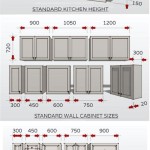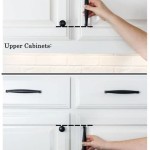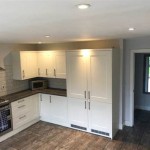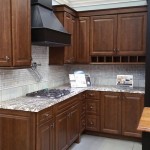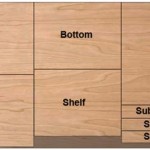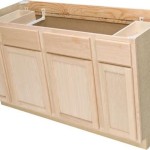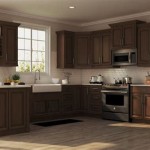Essential Aspects of Kitchen Cabinet Design Setup
Designing a kitchen is a complex process that involves a multitude of factors, one of the most important being the cabinetry. Kitchen cabinets not only provide storage space but also define the overall look and functionality of the room. In this article, we delve into the essential aspects of kitchen cabinet design setup to help you create a kitchen that is both beautiful and efficient.
1. Determine Your Storage Needs
Before you begin designing your kitchen cabinets, it's crucial to assess your storage requirements. Consider the items you typically store in your kitchen and how much space each category requires. This will help you determine the number and size of cabinets you need.
2. Choose a Cabinet Style
The style of your kitchen cabinets will significantly impact the overall aesthetic of the room. There are numerous cabinet styles to choose from, including traditional, modern, contemporary, and rustic. Select a style that complements the existing decor and reflects your personal preferences.
3. Plan the Cabinet Layout
The layout of your kitchen cabinets is equally important as their style. Consider the work triangle, which connects the sink, stove, and refrigerator. The cabinets should be arranged around this triangle to create an efficient and ergonomic workspace.
4. Optimize Cabinet Interiors
The interiors of your kitchen cabinets can be customized to maximize storage capacity. Utilize drawer organizers, shelf dividers, and other accessories to keep your kitchen organized and clutter-free.
5. Consider Cabinet Hardware
Cabinet hardware, such as knobs and handles, can enhance the overall design. Choose hardware that complements the cabinet style and provides a comfortable grip. Consider the size, shape, and finish of the hardware to create a cohesive look.
6. Incorporate Lighting
Proper lighting is essential for a functional kitchen. Under-cabinet lighting illuminates work surfaces, while recessed lighting provides general illumination. Consider using a combination of lighting sources to create a well-lit and inviting space.
7. Pay Attention to Details
Details matter when it comes to kitchen cabinet design. Ensure that the cabinet doors and drawers align properly and open and close smoothly. Add finishing touches such as crown molding or decorative end panels to enhance the overall appearance.
Conclusion
Designing a kitchen cabinet setup requires careful planning and attention to detail. By considering the storage requirements, choosing an appropriate style, optimizing the cabinet interiors, incorporating hardware, lighting, and paying attention to details, you can create a kitchen that is both visually appealing and highly functional. Remember, a well-designed kitchen cabinet setup sets the foundation for a beautiful, organized, and enjoyable cooking space.

Kitchen Layout Organization Tips In 2024 How To Your

Kitchen Cabinet Ideas The Home Depot

Kitchen Layout Templates 6 Diffe Designs

Best Kitchen Layout Ideas For Your Home Livspace

7 Kitchen Layout Ideas That Work

35 Kitchen Layout Ideas Pros Cons

10 Common Kitchen Layout Mistakes And How To Avoid Them

Types Of Kitchen Layouts Design Guide 2024 Forbes Home

The Pros And Cons Of Four Most Common Kitchen Layouts Toulmin Bath Custom Cabinets Kitchens Bathroom Design Remodeling In Tuscaloosa Birmingham Alabama

70 Best Small Kitchen Design Ideas Layout Photos
Related Posts

